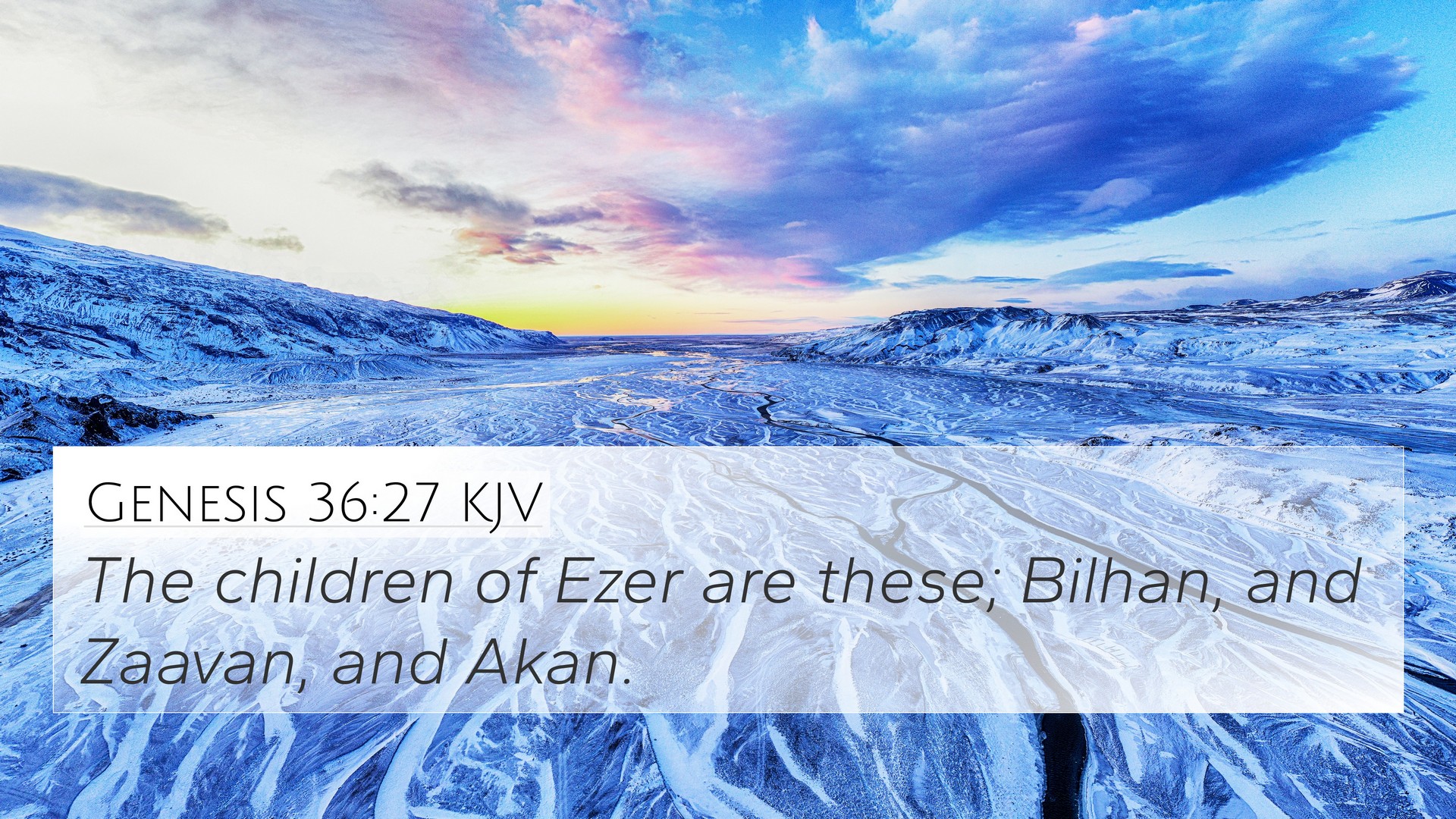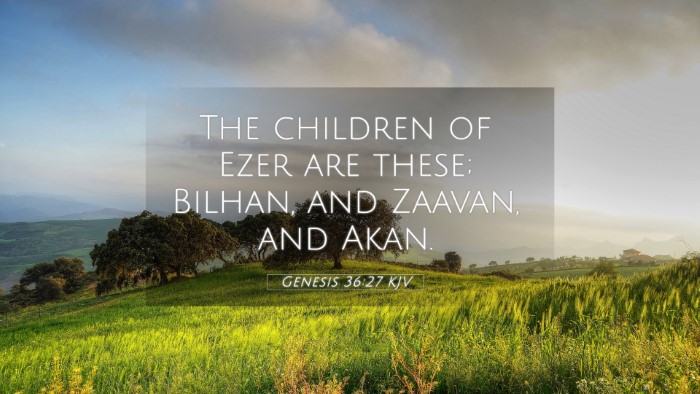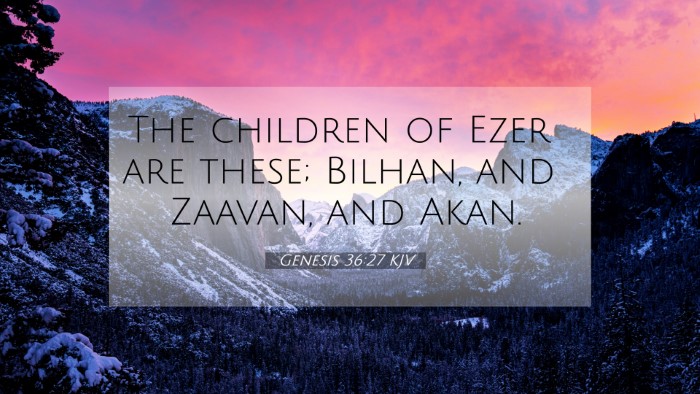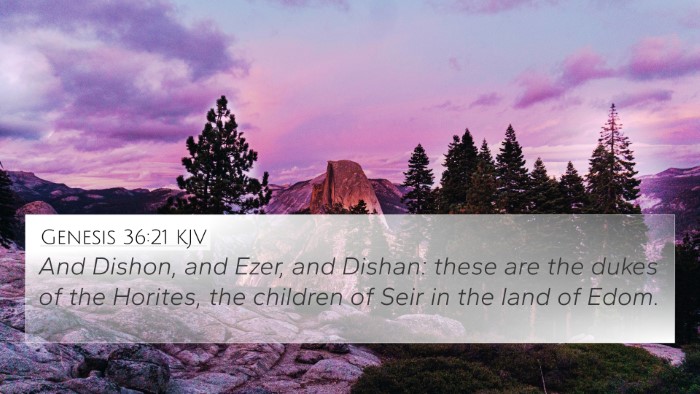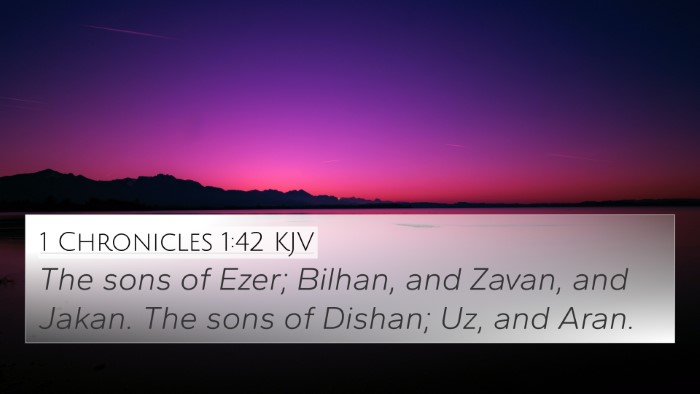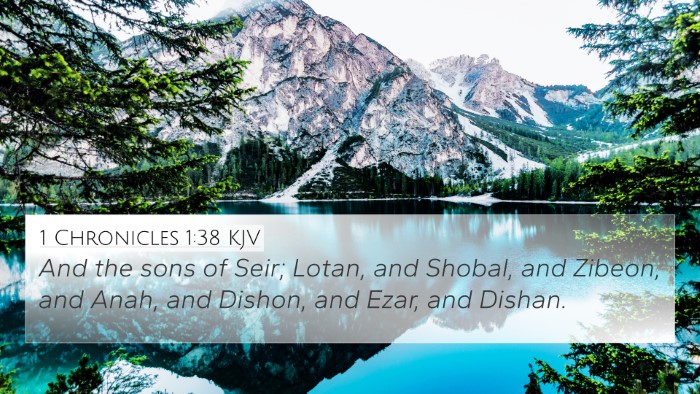Understanding Genesis 36:27 - An In-Depth Examination
Genesis 36:27: "And the children of Dishon are these; Hemdan, and Eshban, and Ithran, and Cheran."
This verse is part of a genealogical record detailing the descendants of Esau, emphasizing the importance of family lineage in biblical history.
Commentary Insights
The commentary insights from various public domain sources such as Matthew Henry, Albert Barnes, and Adam Clarke provide a comprehensive understanding of this verse.
Genealogical Significance
According to Matthew Henry's Commentary, genealogies in the Bible serve more than mere historical records. They highlight God's covenant faithfulness and the unfolding plan of redemption. They show how God’s promises to Abraham extend through Isaac and Jacob down to Esau's descendants.
Albert Barnes adds that such lists also capture the larger narrative of the separation between the descendants of Abraham through Isaac and those through Ishmael and Esau. This reflects God’s sovereign choice in the unfolding of biblical history.
Adam Clarke emphasizes the cultural context of these genealogies, where ancestral lineage formed identity and heritage. The names listed denote various clans or tribes, each contributing to the broader narrative of the nation of Edom, which descended from Esau.
Connections Between Bible Verses
This verse links to several other critical passages, establishing a network of relationships within the scripture. Here are some notable cross-references:
- Genesis 25:23: "And the LORD said unto her, Two nations are in thy womb..." - This passage hints at the conflict between Jacob and Esau, which shapes their descendants.
- Genesis 32:3: "And Jacob sent messengers before him to Esau..." - Jacob’s encounter with Esauforeshadows ongoing themes of conflict and reconciliation in their lineage.
- Genesis 36:1: "Now these are the generations of Esau, who is Edom." - This introduces the broader genealogy of Esau's descendants, including the families mentioned in Genesis 36:27.
- Exodus 15:15: "Then the dukes of Edom shall be amazed..." - Points to the historical significance of Edom’s descendants in biblical prophecy.
- Obadiah 1:18: "And the house of Jacob shall be a fire, and the house of Joseph a flame; and the house of Esau for stubble..." - This illustrates the prophetic and theological ramifications of the lineage between Jacob and Esau.
- Romans 9:13: "As it is written, Jacob have I loved, but Esau have I hated." - This ties to God's sovereign choice and the implications for their descendants.
- 1 Chronicles 1:35-36: A parallel mentioning of Esau’s descendants confirms the continuity of the genealogy.
Thematic Bible Verse Connections
This verse’s thematic connections delve deep into concepts of legacy, divine choice, and the unfolding plan of God. The significance of lineage reverberates throughout both the Old and New Testaments. Understanding these links enriches the study of the biblical narrative.
Tools for Bible Cross-Referencing
When analyzing Genesis 36:27, various tools can enhance understanding:
- Bible Concordance: A helpful resource that lists words and references in the scriptures, allowing for deeper exploration of themes.
- Bible Cross-Reference Guide: Guides readers in finding connections between verses, particularly those that deal with genealogies and divine promises.
- Bible Reference Resources: Compendiums that collect related scriptures, facilitating thematic studies.
- Cross-Reference Bible Study: Methods to integrate multiple verses for a holistic view of the biblical narrative.
- Bible Chain References: These tools illustrate theological or narrative connections, enhancing study pathways.
How to Find Cross-References in the Bible
Discovering connections can be an enlightening journey:
- Identifying Connections: Begin with key themes such as covenant, conflict, and reconciliation to understand Genesis 36:27 within the larger narrative.
- Comparative Studies: Analyze parallels between Old Testament genealogies and New Testament applications of blessings and curses.
- Inter-Biblical Dialogue: Examine relationships between verses to grasp the thematic depth across the Testaments.
Conclusion
Genesis 36:27 is not merely a record of names but a pivotal point in the overarching narrative of the Scriptures, filled with connections that extend beyond mere ancestry. As you explore genealogical texts, cross-referencing tools will enhance your understanding of how this verse relates to God's redemptive work through generations.
